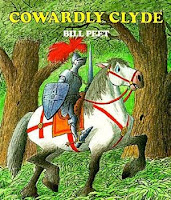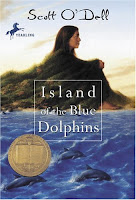I have written before about the way we define and develop creativity (here), and pointed out that can be defined in different ways. One commonly accepted definition is "...the capacity to use ideas and tools in unusual ways; and originality, the capacity to think of novel ideas and products" (Britannica).
Creativity can be assessed in many ways, which in turn is affected by how we define creativity. Since the 1950s when the work of E. Paul Torrance (here) emerged, there have been two main arenas for assessment - personality and cognitive abilities.
a) Personality
Brolin (1992 in Brolin & Rhyamar (1999) summarizes the personality characteristics of the creative person, and suggests they:
- Have a strong sense of self and a desire for self-realisation
- Show self-confidence
- Are strongly motivated
- Demonstrate endurance
- Are intellectually curious
- Are deeply committed to learning
- Tend to be independent in thought and action
- Show openness to impressions (internal and external)
- Are attracted to complexity and obscurity
- Are highly sensitive
- Have a capacity for deep emotional involvement in their learning
In terms of cognitive characteristics the creative person:
- Is highly intuitive
- Thinks in opposites and use analogies and metaphors
- Shows originality with ideas
- Demonstrates varied ways to mentally represent ideas
- Has acute perception
- Can solve problems in novel ways
- Shows high levels of fluency (lots of ideas are generated)
- Has the ability to elaborate on ideas
- Is resistant to closing off possibilities for problem solving or finding solutions
Above: Sample images from Torrance test
2. Is there a creativity crisis?
There have been some recent suggestions that there is a creativity crisis (see here) in some countries. Many of these claims blame educational curricula that focus too narrowly on skills, families that are too achievement focused, reductions in play in childhood and a related increase in 'screen time', and a lifestyle that is too time poor for adults and children.
Dr Kyung Hee Kim at the College of William & Mary has suggested that scores that relate to creativity on the Torrance Test have been steadily declining in the USA since 1990. The Torrance Tasks have been used widely across the world for over 50 years as a key indicator of creativity. Dr Kim examined almost 300,000 results for children and adults over the years and found that the scores had been increasing (as IQ scores have) for many years, but there was a plateau in the USA in 1990. Since then, the scores have been in steady decline.
It's not certain that there is a 'creativity crisis' (I also discuss post here) but I am concerned that the many changes that we have seen in lifestyle in the last 20 years in developed countries, and the narrowing of curriculum might, well have an adverse effect on creativity. The latter is something that we should beware of in Australia as we head down the path of a National Curriculum (see previous post here).
Above: Making a boat on the beach for creative play
3. How do I know a child is creative?
While you can have your child tested to see if they demonstrate high levels of creativity, most teachers can tell quickly if a child seems more creative than other children. Parents sometimes find it hard to be objective, as they view constant progress in learning from birth to age 5. This normal (and quite remarkable development) can easily give all parents a sense that their child is highly intelligent and creative. Here are some questions that you might ask to determine if your child shows extra creativity:
Do they tend to come up with lots of ideas in response to verbal or visual cues?
Are their ideas different, quirky, 'outside the square'?
Do they look at things from different perspectives (e.g. draw an object from above rather than giving a side elevation)?
Do they suggest solutions to problems that surprise you because they are different or unusual?
Do they express themselves metaphorically or abstractly in play situations or in use of language and storytelling?
Do they find it easy to elaborate on the ideas of others (e.g. can progress shared oral storytelling in unusual directions)?
Do they show an attention to fine detail in drawing and language?
Above: Jacob's drawing of a Blue Tongue lizard is drawn from the unusual perspective of "a predator flying above it"
4. What can you do to stimulate creativity?
a) General guidance
At a very general level there are some basic things that parents and teachers can do that will create a context conducive to creativity:
- Allow ample time for structured and (particularly) unstructured play (see my previous post on 'Simple Play' here).
- Limit the amount of 'screen' time for children whether TV, computers, gaming (previous post on TV here).
- Provide rich firsthand experiences that encourage children to observe and respond (see previous post here).
- Read to your children and fill their world with rich language (previous post here).
- Play with language and story (previous posts here and here).
- Encourage experimentation and discovery.
- Open up possibilities to your children through the use of open and varied questions (see previous post on questioning here).
- Provide activities that can stimulate creative responses - dance, drama, music and art.
There are four broad categories of approach employed by schools and other institutions:
'Creative Cycle' approaches (e.g. Guildford 1973 & Kessler 2000) - these offer an integrated approach to curriculum where teachers structure their programs and activities in such a way that they offer time for data gathering, stimulus and engagement; an opportunity for ideas to incubate; genuine inspiration. Under this heading come varied structured approaches to play, exploration and expression.
Strategy or technique approaches (e.g. De Bono's 'six hats', Craft's 'possibility thinking') - Such approaches offer frameworks to be applied to varied ideas and topics. They typically encourage learners to consider 'what if?' or the viewing of problems and situations from varied perspectives.
System or structural approaches (e.g. Reggio Emilia approach, 'open classrooms', Montessori) - such approaches require a more holistic planning of the curriculum and learning environment to privilege creative activities, integrated approaches, open plan classrooms, learning centres and so on.
Pedagogic approaches (e.g. 'Whole Language' approach) - there is some overlap with the above but the focus is much more on the individual child and the relevance of the curriculum for them. Such approaches stress the child's control and ownership of learning, relevance of learning to life experience, novelty, integration and innovations.
5. Final advice for parents
The above is a simply a brief introduction to creativity. I haven't attempted to buy into the many academic arguments about the merits of the various approaches. In some cases, where the child is in childcare regularly, you might use the following to assess the childcare fort your child. I would offer the following suggestions:
Provide children time in the day to explore things motivated by their interests.Other resources and posts
Give them a rich language environment where you read to them, and you provide lots of opportunities for writing and drawing (see my previous post on early writing).
Create a rich language environment where you talk with your child about their experiences (even passive activities like television).
Offer lots of creative activities that encourage personal expression and response.
Ask good and varied questions (why? what if? how about? could it? etc).
Offer as many rich experiences as possible including involving them in the everyday activities of life.
Ideas for assessment and instruction (here)
Newsweek article on 'crisis' in creativity (here)
An Analysis of Research and Literature on Creativity in Education, Anna Craft (here)
My previous post on 'Nurturing Creativity' (here)








































